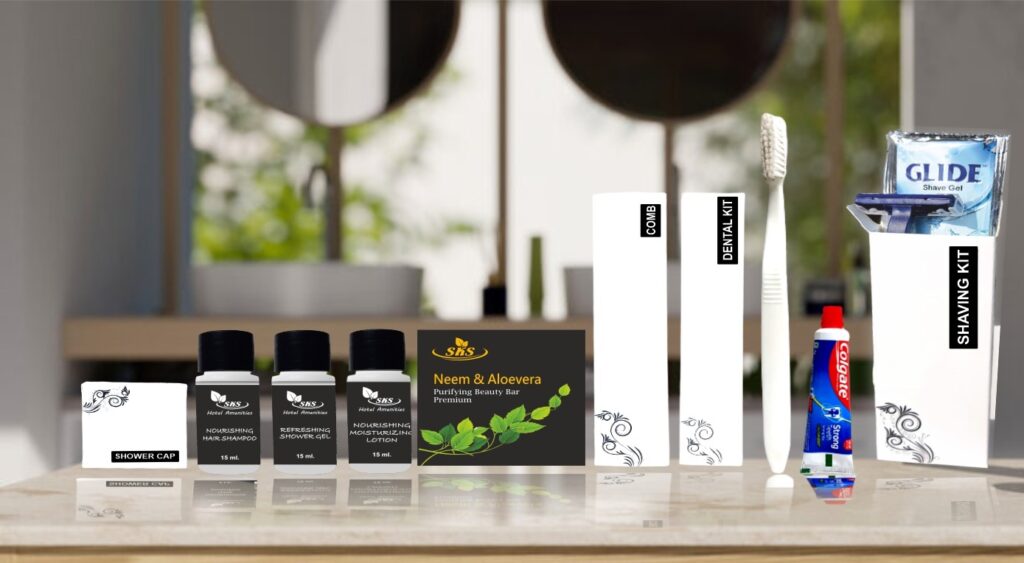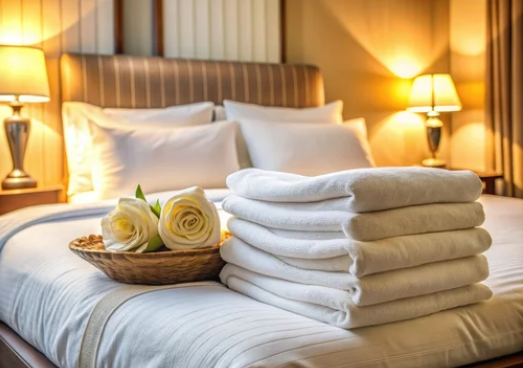A stay at a luxurious hotel often begins with the simple pleasure of slipping into a soft robe and comfortable slippers. These essential items are designed to provide unparalleled comfort, adding a touch of elegance to every guest’s experience. Behind the scenes, the creation of these items involves a careful balance of material selection, thoughtful design, and meticulous manufacturing techniques.

In this article, we’ll explore how hotel slippers and robes are crafted for maximum comfort, offering insights into the processes and materials that define these plush accessories.
The Role of Comfort in Hotel Slippers & Robes
Enhancing Guest Experience
Slippers and robes are integral to a hotel guest’s experience, symbolizing relaxation and luxury. Their comfort can significantly impact how guests perceive their stay.
Reflecting Hotel Brand Identity
The quality and design of slippers and robes often mirror the hotel’s standards. High-end establishments opt for premium materials and personalized touches, while eco-conscious hotels focus on sustainable options.
Supporting Functionality and Durability
Beyond comfort, these items must be functional and durable to withstand repeated use and washing. Their design balances luxury with practicality, ensuring they meet guests’ expectations while enduring regular wear and tear.
Materials Used in Making Hotel Slippers & Robes
Robes: Fabrics that Define Luxury
- Cotton
- Egyptian and Turkish cotton are popular choices for their softness, absorbency, and breathability.
- Lightweight cotton robes are perfect for warm climates, while thicker terry cloth styles suit colder environments.
- Microfiber
- Known for its lightweight and smooth feel, microfiber is a cost-effective alternative to cotton. It offers durability and quick drying, making it ideal for busy hotels.
- Silk
- Though less common, silk robes are offered in premium suites. They provide an unparalleled sense of luxury but require delicate care.
- Bamboo
- Bamboo fabric combines sustainability with softness. It is hypoallergenic, antimicrobial, and environmentally friendly.
Slippers: Cushioning Comfort
- Terry Cloth
- Often used for slipper uppers, terry cloth provides softness and absorbency, making it ideal for post-bath use.
- Memory Foam
- Memory foam insoles adapt to the shape of the foot, offering superior comfort and support.
- EVA Sole
- Ethylene-vinyl acetate (EVA) soles are lightweight, durable, and provide excellent slip resistance.
- Velour
- Velour slippers deliver a plush and cozy experience, often used in luxury settings.
Crafting Hotel Robes: Design & Manufacturing Process
Designing for Comfort & Style
The robe design begins with defining its purpose. Spa robes prioritize absorbency, while lounge robes emphasize lightweight comfort. Designers also consider fit and style, ensuring options for men, women, and unisex use.
Fabric Cutting & Assembly
- Fabrics are cut into patterns, with special attention paid to seam placement for a comfortable fit.
- Components such as collars, cuffs, and belts are sewn together, often reinforced to ensure durability.
Quality Enhancements
Luxury robes may include:
- Double stitching for strength.
- Embroidery for a personalized touch, such as the hotel’s logo.
- Piping details for a refined aesthetic.
Finishing Touches
Once assembled, robes undergo washing and softening processes to enhance their texture. Final inspections ensure they meet the desired quality standards before being packaged for delivery.

Manufacturing Hotel Slippers: A Step-by-Step Guide
Step 1: Material Selection
Slipper materials are chosen based on the intended use. Indoor slippers may focus on softness and lightweight designs, while outdoor options emphasize durability and slip resistance.
Step 2: Cutting & Shaping
The upper and sole materials are cut into precise shapes using patterns. This ensures consistency across large-scale production.
Step 3: Padding & Assembly
- Layers of foam or other cushioning materials are added for comfort.
- The upper and sole are stitched or glued together, with reinforced edges to prevent wear.
Step 4: Customization
Hotels often add branded touches to slippers, such as embroidered logos or unique color schemes, aligning with their identity.
Step 5: Quality Control
Finished slippers are inspected for defects in stitching, alignment, and comfort, ensuring they meet hotel standards.
Sustainable Practices in Production
Eco-Friendly Materials
Hotels are increasingly opting for organic cotton, bamboo, or recycled materials for robes and slippers, reducing environmental impact.
Energy-Efficient Manufacturing
Many manufacturers now use energy-efficient machinery and processes, minimizing carbon footprints during production.
Recyclability
Some slippers are designed for single-use but can be fully recycled, addressing waste concerns in the hospitality industry.

The Importance of Quality Assurance
Testing for Comfort
Robes and slippers undergo rigorous testing to ensure they deliver the promised comfort. This includes evaluating softness, fit, and foot support.
Durability Checks
Repeated washing and wear tests confirm the items can withstand regular use while retaining their quality.
Compliance with Standards
Manufacturers adhere to global standards for textiles, ensuring safety and ethical production practices.
Innovations in Hotel Slippers & Robes
Technological Enhancements
Memory foam insoles, moisture-wicking fabrics, and antimicrobial treatments are examples of innovations that enhance guest comfort.
Customization Features
Hotels can now offer monogrammed robes and slippers with unique designs tailored to individual guest preferences.
Multi-Season Designs
All-weather robes with detachable linings or versatile slippers with dual indoor-outdoor soles cater to diverse climates.
Conclusion
Crafting hotel slippers and robes for maximum comfort is a meticulous process combining premium materials, thoughtful design, and advanced manufacturing techniques. By focusing on quality and sustainability, hotels can provide guests with an indulgent experience that reflects their brand’s identity. These small yet impactful items contribute significantly to guest satisfaction, leaving a lasting impression of luxury and care.
FAQs
What are hotel slippers made of?
Hotel slippers are commonly made from materials like terry cloth, velour, or memory foam for comfort, and EVA for durable, non-slip soles.
How do manufacturers ensure robe comfort?
Robes are crafted using soft, breathable fabrics like cotton or microfiber and undergo special treatments to enhance their texture.
Are hotel slippers reusable?
While many slippers are single-use, eco-conscious hotels offer washable, reusable options made from durable materials.
What is the best material for hotel robes?
Egyptian or Turkish cotton is ideal for luxurious comfort, while bamboo offers a sustainable alternative.
How are hotel slippers customized?
Hotels add unique touches such as embroidered logos, specific colors, or printed designs to align with their branding.
Why is sustainability important in production?
Sustainable practices reduce environmental impact, meeting the growing demand for eco-friendly hospitality solutions.
